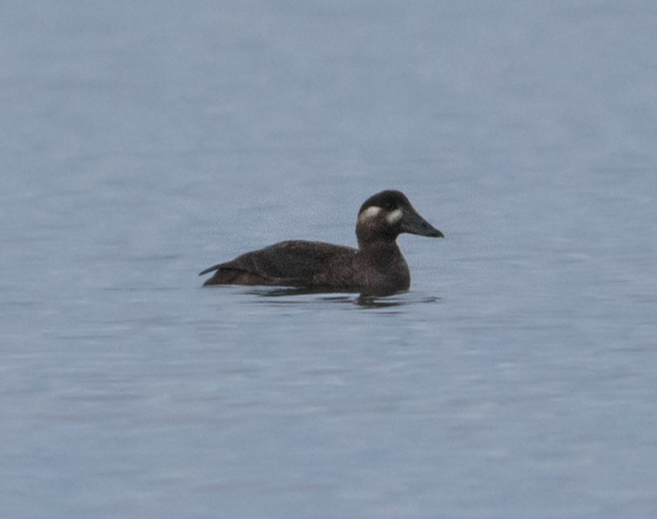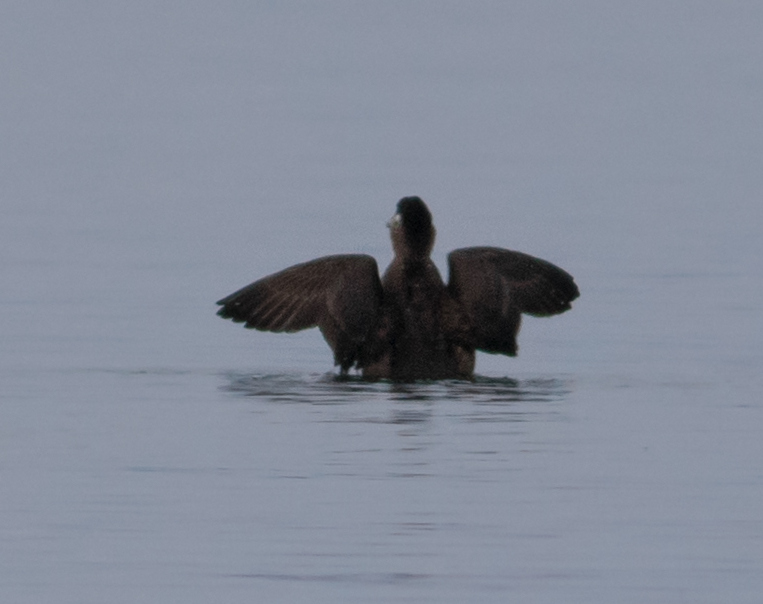Surf Scoter: A first for Arran
Reports

This, the fortieth year of the Arran Natural History Society annual bird report, has been an outstanding year for bird records, with three new species recorded for the first time on Arran. In February there was a long staying Water Pipit, in June the Black-headed Bunting and in November a Surf Scoter.
Surf Scoter is one of the family of black sea ducks called scoters. The Surf Scoter is a North American species breeding in the sub-arctic from western Alaska east into northern Canada and wintering along both the Pacific and Atlantic coasts of North America with some on the Great Lakes. It is a vagrant on this side of the Atlantic with the first British record in the Firth of Forth in 1837. The British Trust for Ornithology (BTO) indicates that there are around fifteen records a year in the UK, mostly in the north and east of Scotland. A search of the Scottish Ornithologists’ Club (SOC) records indicates that in the west of Scotland covering Argyll, Clyde, Clyde islands, Ayrshire and Dumfries and Galloway in the last ten years, there have been only seven Argyll records and two Dumfries and Galloway records, almost all of single birds. The November Surf Scoter on Arran is the first ever record for Arran and for the Clyde and the Clyde Islands.
On Sunday 24 November, in the morning, a female type Surf Scoter was seen and identified by two experienced birdwatchers from Pirnmill, Alex Penn and Georgia Platt. This is their story.
Having stopped at Catacol to see what was around at the river mouth, we were immediately distracted by a 1st-winter Iceland Gull flying south into the mouth to wash. While then watching this gull, we became aware of a single dark duck behind the group of gulls. It turned, showing the distinctive double white face patch of what we initially assumed would be a Velvet Scoter, after a Velvet had been reported relatively recently further south in the Sound at Machrie.
However, as we watched the bird it did not seem to add up to being a Velvet Scoter. The structure and head shape did not seem right, it was rather small, and when the bird flapped soon after, we did not see the white flash we would have expected to see from the secondary flight feathers.
This rang alarm bells and we examined the bird more closely. The stocky neck and large head, with a slightly ‘swollen’ bill shape, rather than the smooth concave bill of a Velvet, seemed to confirm that this was in fact a Surf Scoter. As we watched it over the next hour, the bird fed continuously, diving and re-appearing, resting for around 30 seconds between dives. Each time it dived, it opened its wings, revealing all-dark flight feathers.
In the midst of this, Alex realised that he did not have his camera with him so he drove from Catacol home to Pirnmill to collect it, leaving Georgia to keep watch on the duck! Fortunately the bird remained, enabling the attached record shots of the bird to be taken, showing the head and bill structure, and one flapping that shows the all-dark flight feathers. These images, although distant, show all the key features well enough to confirm the identification as Surf Scoter.
The photographs taken together with the appropriate form were promptly submitted by the observers to the Clyde Bird Rarities Panel where there was no hesitation in accepting the record.
The identification of the first ever Surf Scoter on Arran had been a memorable day for Alex and Georgia
